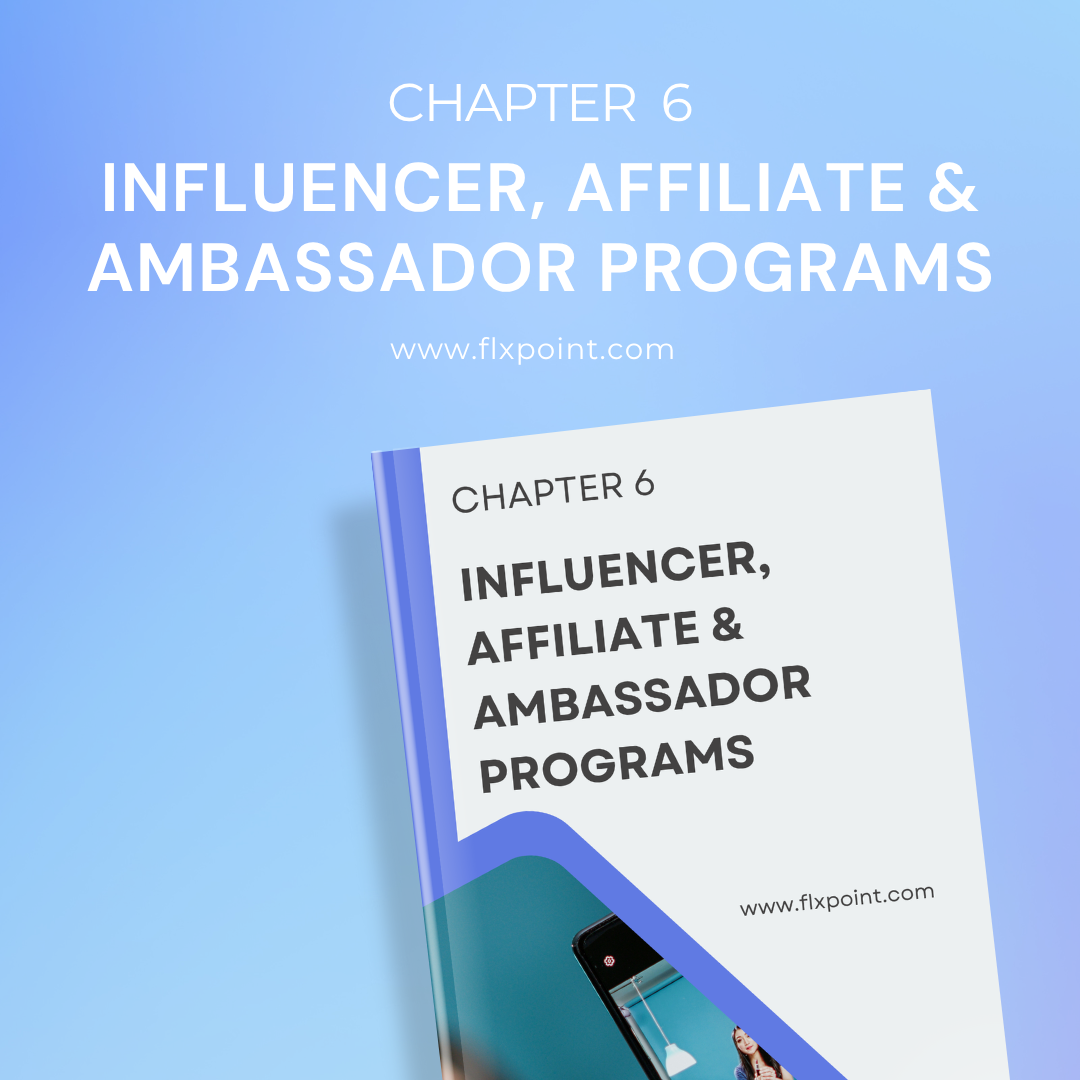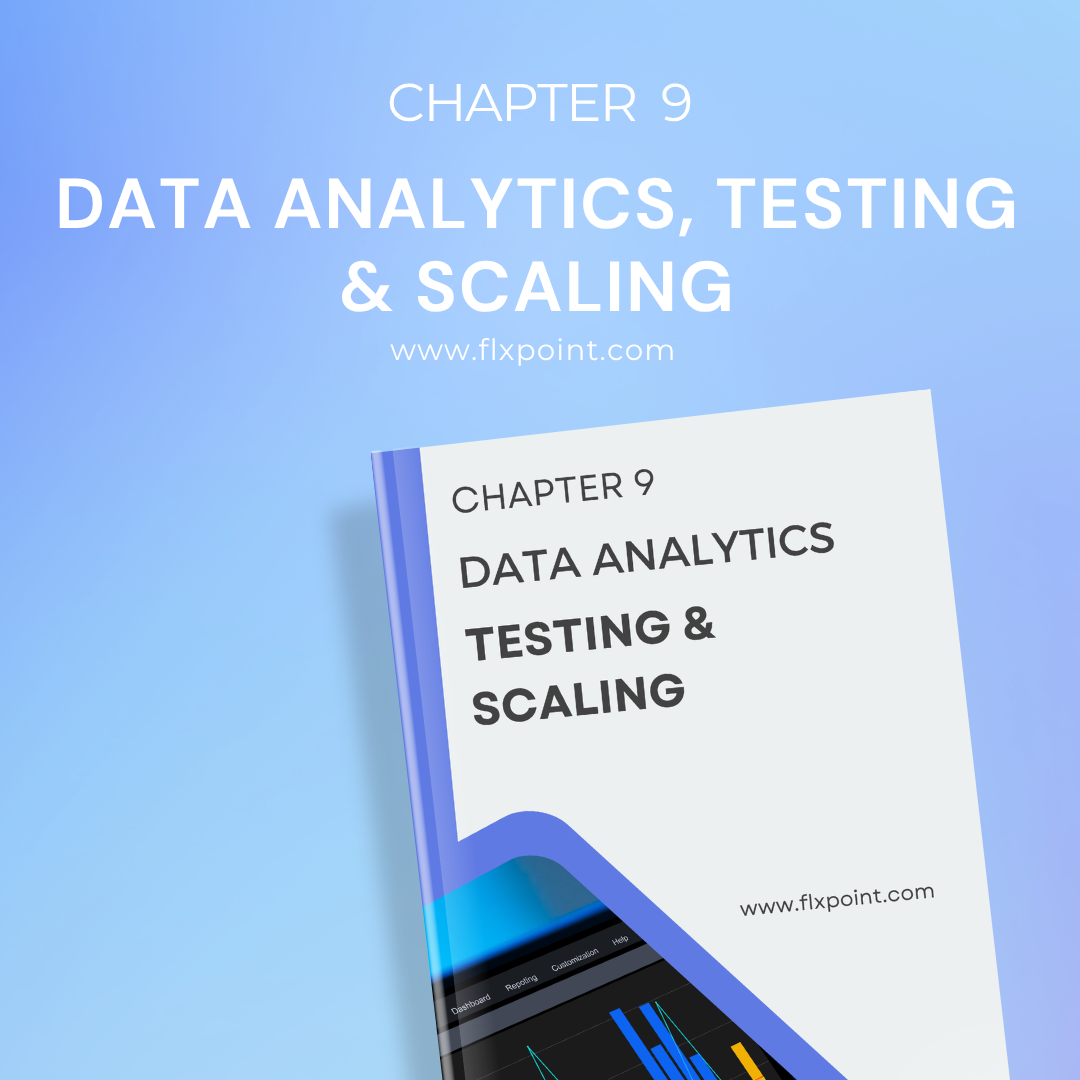Chapter 5 Social Media & Content Engines
Create content systems that drive engagement and sales. Discover how to build multi-platform engines, use AI tools, and create viral loops that work.
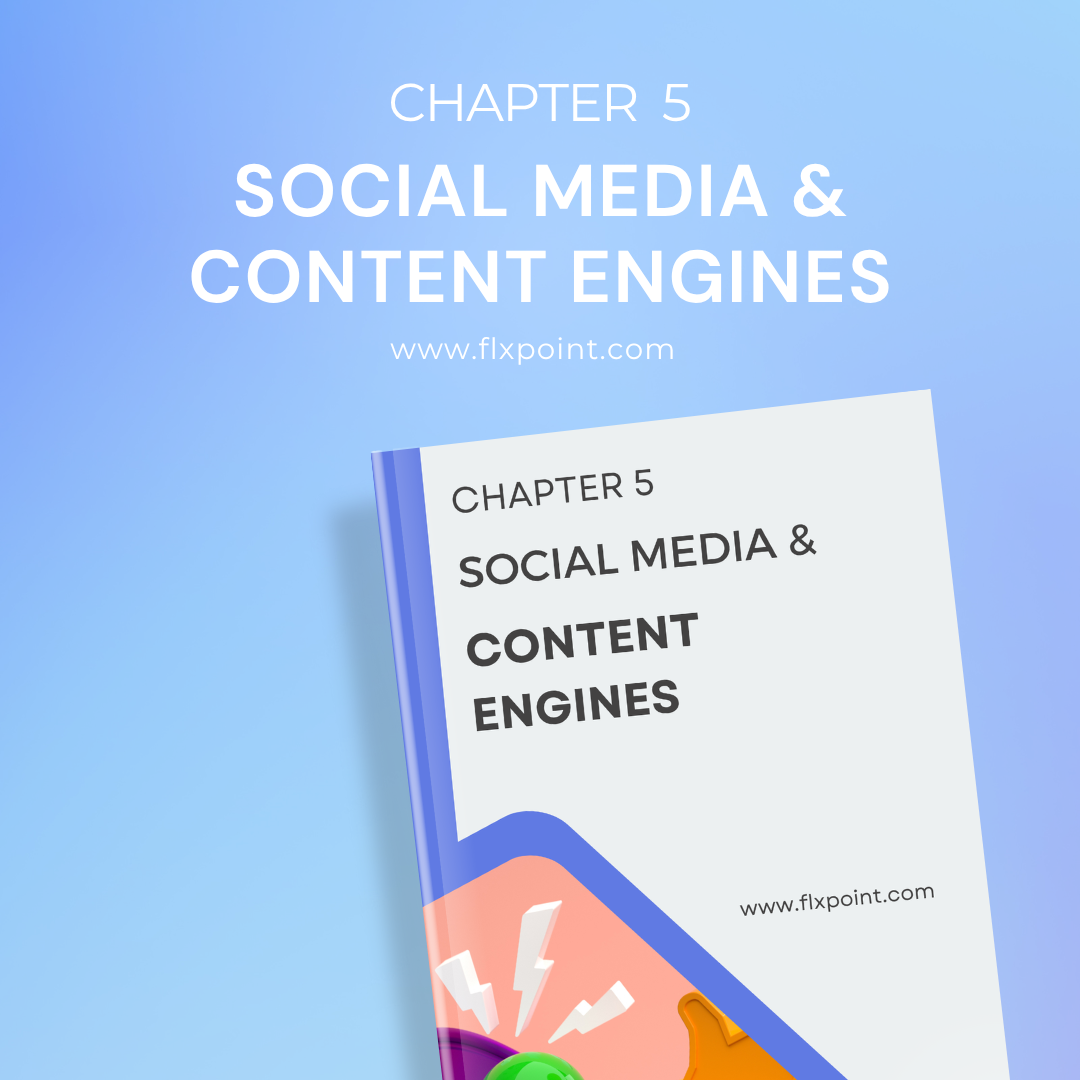
Table of Content
- Introduction
- Building a Multi-Platform Content Engine (Reels, Shorts, Pins, Stories)
- Using AI Tools for Content Scaling (ChatGPT, Jasper, Synthesia)
- UGC Strategy: Collection, Rights Management, Display Integration
- Viral Loop Strategy on TikTok and Instagram
- Performance Tracking with UTM Parameters
Introduction
Your customers are scrolling — and buying — before they ever hit Google. Social isn’t just a traffic source anymore. It’s the storefront.
59% of consumers have discovered new products on TikTok without actively searching for them. Meanwhile, 92% of Instagram users say they've followed a brand, clicked on their site, or made a purchase after seeing a product on the platform. These numbers represent massive opportunities for ecommerce operations of any size.
What makes social media particularly valuable for dropshipping retail businesses is the ability to showcase products without requiring physical inventory on hand. A well-executed social media strategy allows you to present your products in authentic, engaging ways while streamlining the path from discovery to purchase.
This chapter explores how to build and operate a sophisticated social media content engine that works across multiple platforms, leverages AI for scaling and efficiency, taps into user-generated content, creates viral growth loops, and precisely measures performance.
Building a Multi-Platform Content Engine (Reels, Shorts, Pins, Stories)
The most successful ecommerce businesses maintain a strategic presence across multiple social platforms, each with its unique content formats, audience expectations, and engagement patterns. Building a multi-platform content engine requires understanding these differences while maintaining a cohesive brand voice.
Platform-Specific Content Strategies
Instagram: Instagram has evolved from a photo-sharing app to a multi-format powerhouse for ecommerce. For dropshipping businesses, Instagram offers several key content formats:
- Reels: These 15-90 second videos dominate Instagram's discovery algorithm. Successful dropshipping Reels often showcase products in use, highlight key features, or demonstrate problem-solving capabilities. Engagement rates for Reels are 2.4x higher than standard Instagram posts.
- Stories: The 24-hour format creates urgency — perfect for flash sales, product drops, and behind-the-scenes moments that make your brand feel human.
- Also, stories with product tags create a frictionless shopping experience for your audience.
- Shoppable Posts: Regular feed posts with product tags allow customers to tap directly through to product pages, streamlining the purchase journey.
TikTok: With its algorithm favoring content over follower counts, TikTok presents a significant opportunity for dropshipping businesses to gain visibility regardless of account size.
- Short-form videos: TikTok's core format thrives on authenticity, trending sounds, and quick demonstrations. Product unboxings, comparisons, and "before and after" demonstrations perform particularly well for dropshipping businesses.
- TikTok Shop: The platform's integrated shopping features allow for direct purchasing without leaving the app, creating a seamless shopping experience.
YouTube: While traditionally known for longer content, YouTube's Shorts format offers dropshipping businesses an entry point with less production investment:
- YouTube Shorts: These vertical videos under 60 seconds appear in dedicated Shorts feeds and can drive significant discovery. Product demonstrations, tutorials, and comparison videos work well in this format.
- Longer product reviews: More detailed product reviews and tutorials build credibility and trust, especially for higher-priced items in your catalog.
Pinterest: As a platform where users actively seek product inspiration, Pinterest offers unique advantages for dropshipping businesses:
- Idea Pins: Multi-page, video-enabled Pins allow for showcasing products from multiple angles or demonstrating uses.
- Product Pins: These link directly to your product pages and include real-time pricing and availability information.
- Collections: Curated product groupings that appeal to specific customer segments or use cases.
Cross-Platform Content Architecture
Rather than creating content in silos for each platform, successful businesses implement a strategic content architecture that maximizes efficiency while respecting platform differences:
- Core content creation: Start by developing primary assets (photos, videos, copy) that capture your products effectively.
- Platform adaptation: Modify these core assets for each platform's specifications and audience expectations.
- Content calendar alignment: Coordinate releases across platforms to reinforce messaging while accounting for platform-specific timing considerations.
- Cross-promotion: Use each platform's strengths to drive traffic to your content on other platforms.
A practical example of this approach for a dropshipping furniture retailer might look like:
- Creating a high-quality product demonstration video
- Cutting a vertical 30-second version for TikTok with trending audio
- Adapting that same content into an Instagram Reel with different music
- Creating a longer, more detailed version for YouTube
- Extracting key frames for Pinterest Idea Pins
- Using snippets in Instagram Stories with direct shopping links
Content Batching for Efficiency
Content batching has become essential for maintaining consistent presence across multiple platforms without overwhelming your resources. This approach involves:
- Planning multiple pieces in advance: Map out content themes and messages for 2-4 weeks at a time.
- Dedicated production sessions: Schedule concentrated time blocks for capturing photos and videos for multiple posts.
- Assembly-line editing: Process similar content types together to streamline workflow.
- Scheduled publishing: Use platform scheduling tools or third-party solutions to maintain posting consistency without daily manual work.
For dropshipping businesses, batching product-focused content by category, supplier, or theme creates additional efficiencies. This approach is particularly valuable when working with products from multiple suppliers, as it allows you to organize your content production around available product information and assets.
Unified Visual Identity
While adapting content for different platforms, maintaining a consistent visual identity remains crucial for brand recognition. Elements to standardize include:
- Color palette and filters
- Text overlays and graphics
- Introduction and closing sequences
- Music style and pacing
- Overall aesthetic and production quality
This consistency helps customers recognize your content regardless of where they encounter it, building cumulative brand awareness across platforms.
Using AI Tools for Content Scaling (ChatGPT, Jasper, Synthesia)
Artificial intelligence has fundamentally transformed how ecommerce businesses approach content creation. For dropshipping operations juggling multiple product lines from various suppliers, AI tools offer a strategic advantage that goes beyond simple automation. When implemented thoughtfully, these technologies serve as creative amplifiers rather than replacements for human insight, allowing your team to scale production while maintaining the authentic connections that drive customer engagement.
AI Writing Assistants
The content bottleneck has long plagued ecommerce marketing teams trying to maintain presence across multiple platforms. AI writing tools address this challenge by augmenting your creative process at various stages.
Drowning in product descriptions? You’re not alone. AI tools like ChatGPT can help you turn specs into scroll-stopping content — fast.
ChatGPT has emerged as a versatile writing partner for ecommerce teams. Dropshippers managing extensive product catalogs can use it to transform technical specifications from various suppliers into benefit-focused language that resonates with consumers.
The tool excels at generating multiple variations of product descriptions, allowing you to maintain fresh content across listings without starting from scratch each time. When developing video scripts, ChatGPT can suggest engaging hooks and narrative structures that capture attention within the crucial first few seconds of social content.
Specialized AI writers like Jasper build on these capabilities with ecommerce-specific features. These platforms excel at producing content tailored to platform requirements, from character-limited TikTok captions to longer Pinterest descriptions optimized for search visibility.
FoThe most effective implementation approach treats AI as a collaborative partner in your content process rather than a replacement for human creativity. Start by using AI to generate initial drafts or multiple content options, then apply your team's expertise to edit for brand voice and technical accuracy. This human oversight stage is essential for adding the product knowledge and industry context that AI may lack. The final review should ensure compliance with platform policies and brand standards before publication.
Consider a dropshipping business specializing in kitchen products from multiple suppliers. Rather than struggling to create unique descriptions for dozens of similar knife sets, they might use ChatGPT to generate varied messaging approaches, select the most promising angle based on their market knowledge, then customize the content with specific insights about materials, manufacturing processes, and usage scenarios that differentiate their offerings.
AI Image Generation for Ecommerce
The visual dimension of ecommerce has been revolutionized by AI image generation tools like OpenAI's DALL-E, Midjourney, and the newer 4o Image Generation. These technologies address a fundamental challenge for dropshipping businesses: creating consistent, high-quality visual content across varied product lines without physical access to the items.
For product visualization, these tools enable dropshippers to transcend the limitations of supplier-provided imagery. A business can generate contextual images showing products in aspirational settings that would be prohibitively expensive to create through traditional photography.
More practically, they can produce consistent product presentations across categories sourced from different suppliers, maintaining visual cohesion despite varied original assets. This capability proves particularly valuable when suppliers provide images with inconsistent lighting, backgrounds, or styling.
The marketing applications extend beyond basic product imagery. Social media campaigns require a constant stream of fresh, platform-optimized visual content. AI generation tools allow ecommerce teams to produce these assets at scale, creating seasonal variations, promotional materials, and platform-specific formats without expanding design resources.
This capability is especially valuable for testing different visual approaches before committing to more expensive custom photography.
Maintain brand consistency by developing detailed prompting templates that guide the AI toward your visual identity. Combine these generated assets with actual product imagery in a transparent mix that leverages the strengths of each approach.
Visual Content Generation and Optimization
Beyond static imagery, AI visual tools have expanded to address broader content needs for ecommerce operations. When supplier images lack context or variety, enhancement tools can transform basic product photos through background replacement, virtual staging in lifestyle settings, and the creation of consistent mockups across categories.
Video content, traditionally resource-intensive to produce, has become more accessible through AI platforms like Synthesia. These tools enable dropshipping businesses to create presenter-led product explanations without filming sessions, develop multilingual content variations for international markets, and maintain consistent video output even when physical products aren't available for demonstration.
The optimization capabilities of AI extend beyond creation to performance enhancement. Predictive analytics can forecast which content types will resonate with specific audience segments, identify optimal posting windows across platforms, and anticipate seasonal trends for inventory planning.
A/B testing automation continuously refines your approach by systematically evaluating different creative elements and implementing successful variations. Content personalization mechanisms can tailor presentations based on viewer demographics and behaviors, creating more relevant experiences without manual segmentation work.
These optimization tools are particularly valuable for dropshipping operations managing multiple product categories from diverse suppliers. They create efficient feedback loops that continuously improve performance without requiring constant manual analysis of complex data sets.
Practical AI Implementation Framework
To implement AI tools effectively within your content engine:
- Audit your content workflow to identify the most time-consuming or repetitive tasks
- Start with focused AI implementation in one area rather than transforming everything at once
- Develop templates and prompts specific to your brand voice and products
- Implement human review checkpoints at critical stages
- Continuously refine your AI systems based on performance data
This measured approach enables you to capture efficiency gains while maintaining quality control and authentic brand connection.
UGC Strategy: Collection, Rights Management, Display Integration
User-generated content (UGC) has become a cornerstone of successful ecommerce social media strategies, particularly for dropshipping businesses seeking to build trust without having physical storefronts. When your customers showcase your products in real-world settings, they create authentic marketing assets that significantly outperform branded content in both trust and conversion rates.
Research shows that 84% of consumers trust peer recommendations above any other form of advertising, and content created by customers is 2.4x more likely to be perceived as authentic than brand content. For dropshipping operations, UGC bridges the credibility gap that can exist when selling products you don't physically manufacture.
Strategic UGC Collection
Collecting quality UGC requires a systematic approach rather than hoping it appears organically:
Post-Purchase Engagement:
- Automated email sequences requesting product photos or videos
- Inclusion of branded hashtag cards in packaging (coordinated with suppliers)
- SMS follow-ups with specific content creation requests
- Incentive programs offering discounts on future purchases
Community Building Initiatives:
- Weekly or monthly themed content challenges
- Featured customer spotlights
- Expert user programs with exclusive benefits
- Community Q&A sessions that generate content
Platform-Specific Collection Methods:
- Instagram: Branded hashtags and mention monitoring
- TikTok: Hashtag challenges and duet invitations
- Pinterest: Group boards for customer styling
- YouTube: Video response requests and playlist inclusion
For dropshipping businesses working with multiple suppliers, organizing UGC collection by product category creates additional efficiencies in managing and deploying this content.
Rights Management Framework
Getting proper permission to use customer content isn’t just the right thing to do — it also protects your brand and builds trust:
Clear Permission Systems:
- Explicit terms in your content submission forms
- Social media comment-based permission capture
- Documented outreach processes for content discovered organically
- Digital rights management tracking system
Permission Documentation:
- Standardized templates for different usage scenarios
- Centralized database of permissions by content piece
- Regular audits of your UGC usage versus permissions obtained
- Tiered permission levels for different usage types (social only, website, ads, etc.)
Customer Education:
- Transparent information about how content will be used
- Clear instructions for opting out if desired
- Regular acknowledgment and celebration of contributors
- Guidelines on what makes for effective submissions
Dropshipping businesses should establish standardized processes that can be easily followed across product categories and by team members with varying levels of legal knowledge.
UGC Display Integration
Collected UGC delivers maximum value when strategically integrated throughout your marketing ecosystem:
Social Media Integration:
- Regular features in your main content calendar
- Dedicated UGC showcase series
- Stories highlights featuring customer content
- Engagement with UGC through comments and shares
Website Implementation:
- Product page galleries showing items in real settings
- Category page UGC feature sections
- Homepage showcases of exceptional customer content
- Blog content built around customer stories and submissions
Email Marketing Enhancement:
- UGC inclusion in abandoned cart recovery sequences
- Customer spotlights in regular newsletters
- Social proof elements in promotional campaigns
- Post-purchase content to encourage additional sales
Paid Advertising Amplification:
- UGC-centered ad creatives across platforms
- Testimonial-based retargeting campaigns
- Combined UGC and influencer content in acquisition campaigns
- Platform-specific UGC ad formats (such as Instagram UGC ads)
For dropshipping businesses, integrating UGC across these touchpoints creates a cohesive narrative that builds credibility around products you don't physically manufacture or warehouse.
UGC Quality and Curation
Not all user content delivers equal impact. Implementing quality standards and curation processes ensures your UGC strategy enhances rather than dilutes your brand:
Quality Guidelines:
- Technical specifications (resolution, orientation, etc.)
- Content elements that should be included or avoided
- Alignment with brand aesthetic and values
- Product visibility requirements
Curation System:
- Tiered categorization (primary featured content, secondary usage, not for use)
- Platform-specific selection criteria
- Diversity and representation considerations
- Seasonal relevance tagging
Enhancement Processes:
- Light editing for consistency with brand aesthetic
- Strategic cropping or framing
- Caption development to maximize impact
- Appropriate content tagging for searchability
For dropshipping businesses with diverse product catalogs, implementing category-specific curation criteria ensures relevant standards are applied across your entire range.
UGC Measurement Framework
Measuring the impact of your UGC program helps refine your approach and demonstrate ROI:
Performance Metrics:
- Engagement rate comparison (UGC vs. branded content)
- Conversion rates on UGC-featuring product pages
- UGC submission rate as percentage of sales
- Cost savings from reduced content creation needs
Qualitative Assessment:
- Sentiment analysis of comments on UGC posts
- Thematic analysis of customer content focuses
- Identification of emerging product uses or benefits
- Feedback on product improvements or issues
Program Optimization:
- A/B testing of different UGC display methods
- Comparative analysis of UGC collection techniques
- Conversion impact by UGC type and placement
- Attribution modeling for UGC-influenced sales
A comprehensive measurement approach allows you to continuously refine your UGC strategy and demonstrate its business impact to stakeholders.
Viral Loop Strategy on TikTok and Instagram
Creating content that spreads organically through social sharing is the holy grail of social media marketing. The key lies in understanding the mechanics of content spreading and deliberately engineering your strategy to facilitate this process.
Viral Loop Framework
A viral loop turns one viewer into many. Someone sees your content, shares it, and brings in others who do the same — repeat, scale, grow.
This content then travels through external networks, reaching potential new users who engage with the shared content and visit your platform. The cycle completes when these new visitors convert to customers themselves and begin sharing your content with their networks, starting the process anew.
TikTok's algorithm-driven discovery environment makes it particularly fertile ground for viral content from dropshipping businesses. Product demonstrations revealing unexpected features or capabilities often gain traction, especially when they challenge viewer expectations.
Before-and-after transformation content showing dramatic results can trigger sharing based on surprise and utility. Content that elicits strong reactions naturally prompts viewers to tag others who might have similar responses.
Perhaps most powerfully, challenge-based content that encourages viewers to recreate or respond to your original post can spark cascading engagement that extends far beyond your initial audience.
Instagram's multi-format platform supports several viral loop strategies tailored to different content types. Reels showcasing unusual product applications can capture attention and drive shares, particularly when they demonstrate innovative solutions to common problems.
Multi-image carousels delivering valuable information in a swipeable format encourage saves and shares when they provide genuinely useful content. Story templates designed with interactive elements prompt resharing with personal input, extending reach through user participation. Product styling inspiration that showcases creative possibilities often drives tagging and saving behaviors that expand visibility.
The primary goal across all platforms is designing content that naturally motivates viewers to share with their own networks, extending your reach beyond your existing audience. This organic amplification creates exponential growth potential without corresponding increases in marketing spend.
Viral Trigger Mechanisms
Certain emotional and practical triggers reliably drive sharing behavior across all social platforms. Understanding and strategically incorporating these elements increases the viral potential of your content.
Emotional triggers create immediate, instinctive sharing responses. Surprise acts as perhaps the most powerful catalyst when your content reveals unexpected product features or applications that challenge assumptions.
Amusement drives sharing when your demonstrations or comparisons incorporate humor that viewers want to pass along to friends. Content that showcases truly impressive transformations or results triggers amazement that compels viewers to share their reaction with others. Inspirational content featuring aspirational outcomes or creative ideas motivates sharing as viewers connect others with possibilities they find exciting.
Practical motivators complement these emotional triggers by providing rational reasons to share. Content that delivers genuine utility by solving common problems gets shared because viewers want to help others facing similar challenges.
A dropshipping business selling kitchen gadgets might create a TikTok showing an unusual fruit preparation tool accomplishing its task in seconds (surprise), with text overlay highlighting the time saved compared to traditional methods (utility), ending with a call to tag friends who need this in their life (social prompt). This combination of triggers significantly increases the likelihood of viral spread.
Creative Formats That Drive Virality
Beyond understanding psychological triggers, certain content structures have proven particularly effective at generating viral spread for ecommerce businesses. Mastering these formats creates repeatable frameworks for viral content creation.
Comparison-based content creates inherently shareable scenarios by highlighting stark contrasts. Before-and-after results visually demonstrate transformation in a way that captures attention and drives interest. With-and-without product demonstrations clearly illustrate the difference your product makes in solving problems. Expected-versus-reality scenarios create moments of surprise when viewers see outcomes that exceed their expectations. Collections of customer results provide social proof at scale that builds confidence and interest.
List-based structures organize information in easily digestible formats that viewers find valuable enough to share. Content showing products that solve common problems creates immediate utility and relevance. Pieces highlighting multiple ways to use trending products appeal to viewers' desire to maximize value. Lists revealing things viewers didn't know about product categories position the sharer as an information source with valuable insights. Collections of products targeted to specific audiences help viewers connect friends with solutions tailored to their needs.
Problem-solution frameworks create natural storytelling arcs that drive engagement and sharing. Begin by identifying a common challenge that resonates with your audience, then showcase failed traditional approaches that create tension and relatability.
Introduce your product as a genuine solution that addresses the established pain points, then demonstrate the satisfied result that resolves the initial tension. This narrative structure creates compelling content that viewers share because it follows a satisfying emotional journey.
Quick tutorials address specific needs while showcasing your products in action. Content highlighting unexpected uses for common products creates surprise and practical value. Time-saving techniques appeal to universal desires for efficiency. Expert tips and tricks position your brand as a knowledge authority worth following and sharing. Guidance on avoiding common mistakes provides preventative value that viewers want to share with others facing similar challenges.
For dropshipping businesses, these formats can be templated and applied across multiple product categories, creating efficient systems for generating potentially viral content regardless of supplier diversity.
Platform Mechanics Optimization
Each social platform has specific features and algorithms that can be leveraged to increase viral potential. Understanding these technical elements allows you to optimize content distribution for maximum sharing and engagement.
TikTok's algorithm heavily favors content that maintains viewer attention and generates engagement. Strategic sound selection from trending audio libraries immediately increases discoverability and contextual relevance.
Hashtag usage should balance trending terms for discovery with specific terms for targeting, creating a mix that maximizes visibility to relevant audiences. Align posting timing with your audience's peak engagement windows, typically evenings and weekends for consumer products.
Perhaps most importantly, actively respond to comments on your videos, as this interaction significantly boosts algorithm visibility and encourages community building.
Instagram rewards content that generates meaningful engagement across its various formats. Carousel posts that prompt multiple interactions through swipes, likes, and saves receive algorithmic preference. Story features with interactive elements like polls and questions drive engagement that extends content lifespan.
For Reels, focus on editing techniques that improve completion rates, including dynamic pacing and hook-driven openings. Strategic tagging of complementary accounts creates potential cross-promotion opportunities without requiring formal partnerships.
Pinterest's discovery system operates differently from pure social networks, focusing on search and interest alignment. Optimize your content with vertical formats designed specifically for mobile viewing, as most discovery happens on smartphones. Incorporate rich keyword usage in descriptions to increase search visibility for relevant terms. Develop series-based content that encourages profile visits once users discover a single pin. Align seasonal content planning with search trends, creating and promoting content 30-45 days before seasonal peaks to capture planning-stage interest.
Understanding and working with these platform-specific elements dramatically increases the chances of achieving viral spread by aligning your content with each system's reward mechanisms.
Viral Campaign Measurement
Tracking the right metrics helps identify which content has viral potential and refine your approach over time. A comprehensive measurement framework goes beyond basic engagement metrics to evaluate true viral performance.
Focus on viral-specific indicators that show how effectively content spreads beyond your direct audience. Share-to-view ratio reveals what percentage of viewers find your content compelling enough to pass along.
Second-order engagement measures interactions on shared versions of your content, indicating strength of appeal beyond your followers. Non-follower reach percentage quantifies how successfully your content is extending beyond your existing audience. Source analysis tracks which discovery mechanisms are bringing new accounts to your content.
For deeper performance tracking, calculate more sophisticated metrics that reveal viral dynamics. Viral coefficient measures the number of new users generated per existing user, with any number above 1.0 indicating exponential growth.
Viral cycle time tracks the average period between initial exposure and resharing, with shorter cycles enabling faster spread. Content velocity measures the rate of sharing increase over time, helping identify acceleration or deceleration patterns. Attribution analysis connects viral content exposure to eventual conversions, revealing true business impact.
These measurements inform a continuous optimization feedback loop. Identify patterns in high-performing content to understand which elements drive success in your specific niche.
Conduct isolation testing to determine which specific triggers generate the strongest sharing responses. Analyze audience segments to identify which customer groups are most receptive to viral messaging. Optimize conversion paths specifically for viral traffic, which may enter your funnel with different awareness levels than other traffic sources.
This systematic measurement approach allows for continuous refinement of your viral content strategy, increasing effectiveness over time through data-driven iteration rather than relying on unpredictable "viral luck."
Performance Tracking with UTM Parameters
In the complex world of social media marketing, precise attribution is essential for understanding what's working and optimizing your investment. UTM parameters provide the granular tracking needed to identify exactly which content, platforms, and campaigns drive valuable traffic and conversions.
UTM Parameter Fundamentals
UTM (Urchin Tracking Module) parameters are tags added to URLs that pass specific tracking information to your analytics platform. They consist of five key elements:
Source (utm_source): Identifies the platform or site sending traffic (example: instagram, tiktok, pinterest)
Medium (utm_medium): Specifies the marketing channel type (example: social, email, cpc)
Campaign (utm_campaign): Names the specific marketing initiative (example: spring_collection, black_friday, new_launch)
Term (utm_term): Tracks specific terms or keywords (primarily used for paid search)
Content (utm_content): Distinguishes between similar content items (example: blue_video, lifestyle_image, influencer_mention)
For dropshipping businesses managing content across multiple platforms and campaigns, a consistent UTM strategy creates the data foundation for meaningful performance comparison.
Strategic Implementation Framework
Rather than implementing UTM tracking haphazardly, develop a structured approach:
Naming Convention Development:
- Create standardized formats for each parameter
- Develop a shared document of approved values
- Implement consistent separator usage (underscores vs. dashes)
- Establish case sensitivity standards (lowercase recommended)
Hierarchical Campaign Structure:
- Primary campaigns (seasonal, product line, objective-based)
- Sub-campaigns (platform-specific implementations)
- Content variations (creative approaches, messaging tests)
- Targeting segments (audience specification when relevant)
Parameter Focus by Business Need:
- Platform performance comparison: Emphasize source and medium
- Campaign effectiveness analysis: Focus on campaign and content
- Creative optimization: Highlight content variations
- Combined analysis: Implement comprehensive parameter usage
This structured approach ensures your data will support meaningful analysis rather than creating confusion through inconsistent implementation.
Platform-Specific Implementation
Each social platform presents unique considerations for UTM implementation:
Instagram:
- Bio link tools (Linktree, Beacom) with individual UTM codes
- Story swipe-up links (for qualified accounts)
- Shopping tag destination URLs
- Paid advertisement destination tracking
TikTok:
- Profile link tracking
- TikTok Shop product links
- Video caption links (where permitted)
- Paid campaign destination URLs
Pinterest:
- Pin destination URLs
- Profile links
- Board description links
- Paid promotion tracking
YouTube:
- Video description links
- Card and end screen destinations
- Community post links
- Channel page links
For each platform, implement consistent parameter structures while accounting for the specific user journeys relevant to that environment.
Automated UTM Management
As your social strategy scales, manual UTM creation becomes unwieldy. Implement automated systems:
URL Builder Tools:
- Google's Campaign URL Builder for basic needs
- Dedicated UTM management platforms for complex requirements
- Custom spreadsheet templates with formula-based generation
- Integration with your content management workflow
Analytics Platform Integration:
- Direct connection to Google Analytics
- Custom dashboard creation for UTM analysis
- Regular reporting templates based on key parameters
- Cross-platform attribution modeling
Team Implementation Support:
- Visual workflow guides for proper implementation
- Validation checks before content publication
- Regular audit processes to ensure compliance
- Centralized troubleshooting for tracking issues
These systems ensure consistent implementation across team members and campaigns, maintaining data integrity.
Advanced Analysis Techniques
With properly structured UTM data, sophisticated analysis becomes possible:
Multi-Touch Attribution:
- First-touch attribution for awareness evaluation
- Last-touch attribution for conversion credit
- Linear models for journey understanding
- Time-decay models for recency valuation
Comparative Platform Analysis:
- Performance benchmarking across platforms
- Content type effectiveness by platform
- Audience response patterns by source
- Investment return calculation by channel
Campaign Journey Mapping:
- Visualization of customer paths across touchpoints
- Identification of high-performing sequences
- Abandonment point analysis
- Optimization opportunities at journey stages
Segment-Specific Insights:
- New vs. returning visitor behavior differences
- Product category interest patterns
- Geographic response variations
- Device-specific engagement trends
These advanced techniques transform raw tracking data into actionable business intelligence that informs strategy refinement.
UTM Integration with Business Systems
Maximize the value of your UTM strategy by integrating this data throughout your business ecosystem:
CRM Integration:
- Customer acquisition source tracking
- Lifetime value analysis by traffic origin
- Segment creation based on discovery path
- Personalization informed by entry points
Email Marketing Connection:
- Campaign-specific segment creation
- Personalized follow-up based on social origin
- Abandoned journey reactivation
- Cross-channel cohort analysis
Advertising Platform Feedback:
- Conversion data for optimization
- Lookalike audience development
- Negative audience creation for funnel stages
- Budget allocation informed by performance
Inventory and Procurement Planning:
- Product interest prediction based on traffic
- Trend identification from social engagement
- Seasonal planning informed by campaign performance
- Supplier relationship prioritization based on product performance
This ecosystem integration ensures that your UTM insights drive action throughout your business, not just within the marketing function.
Conclusion
The social media landscape continues to evolve at a breathtaking pace, but the fundamental principles of building a high-performing content engine remain consistent. By implementing a strategic multi-platform approach, leveraging AI for scale and efficiency, harnessing user-generated content, engineering viral loops, and precisely measuring performance, dropshipping and multi-source retail businesses can transform social media from a marketing expense into a powerful revenue and growth driver.
The most successful implementations share several key characteristics:
- Strategic integration across platforms and business functions
- Systematic processes that enable consistency and scale
- Continuous optimization based on performance data
- Authentic connection with your specific audience segments
- Technical sophistication balanced with creative excellence
As social platforms continue adding commerce capabilities and consumers increasingly discover products through social channels, the businesses that master these approaches will gain significant advantages in customer acquisition efficiency, brand building, and direct revenue generation.
The frameworks and strategies outlined in this chapter provide a comprehensive foundation for building and operating your social media content engine. By adapting these approaches to your specific business model, product range, and customer base, you can develop a distinctive social presence that drives sustainable growth while maintaining operational efficiency.
Remember that social media success rarely happens overnight. The businesses that commit to methodical implementation, continuous learning, and patient optimization ultimately outperform those seeking viral shortcuts.
Build your systems with both short-term wins and long-term sustainability in mind, and your social media content engine will become a durable competitive advantage.
Ready for When the Orders Start Flowing In?
What happens when all those new customers start ordering simultaneously and your backend systems buckle under pressure? That's where Flxpoint steps in.
While your social content engine drives customer acquisition, our robust operations platform ensures you can fulfill those orders efficiently whether they're coming from your own inventory, dropshipping partners, or multiple fulfillment sources.
We seamlessly connect your storefronts, suppliers, and fulfillment systems so backend complications never interrupt your growth momentum.
When your content pops off, Flxpoint’s ready. From viral hits to supplier syncs, we keep your backend as smooth as your scroll. Let’s grow.
Request a demo or call today to see how Flxpoint keeps your business running smoothly as your social strategy drives more and more customers your way.
Guide Chapters
- Chapter 1: Choosing the Right Ecommerce Platform
- Chapter 2: Technical Store Optimization for Conversions
- Chapter 3: SEO for Dropshipping – Advanced Tactics
- Chapter 4: Paid Media Mastery
- Chapter 5: Social Media & Content Engines
- Chapter 6: Influencer, Affiliate & Ambassador Programs
- Chapter 7: Email & SMS Marketing Automation
- Chapter 8: Content Marketing & Search Intent Targeting
- Chapter 9: Data Analytics, Testing & Scaling
- Chapter 10: Building Brand Loyalty & Advocacy
All Chapters in This Guide
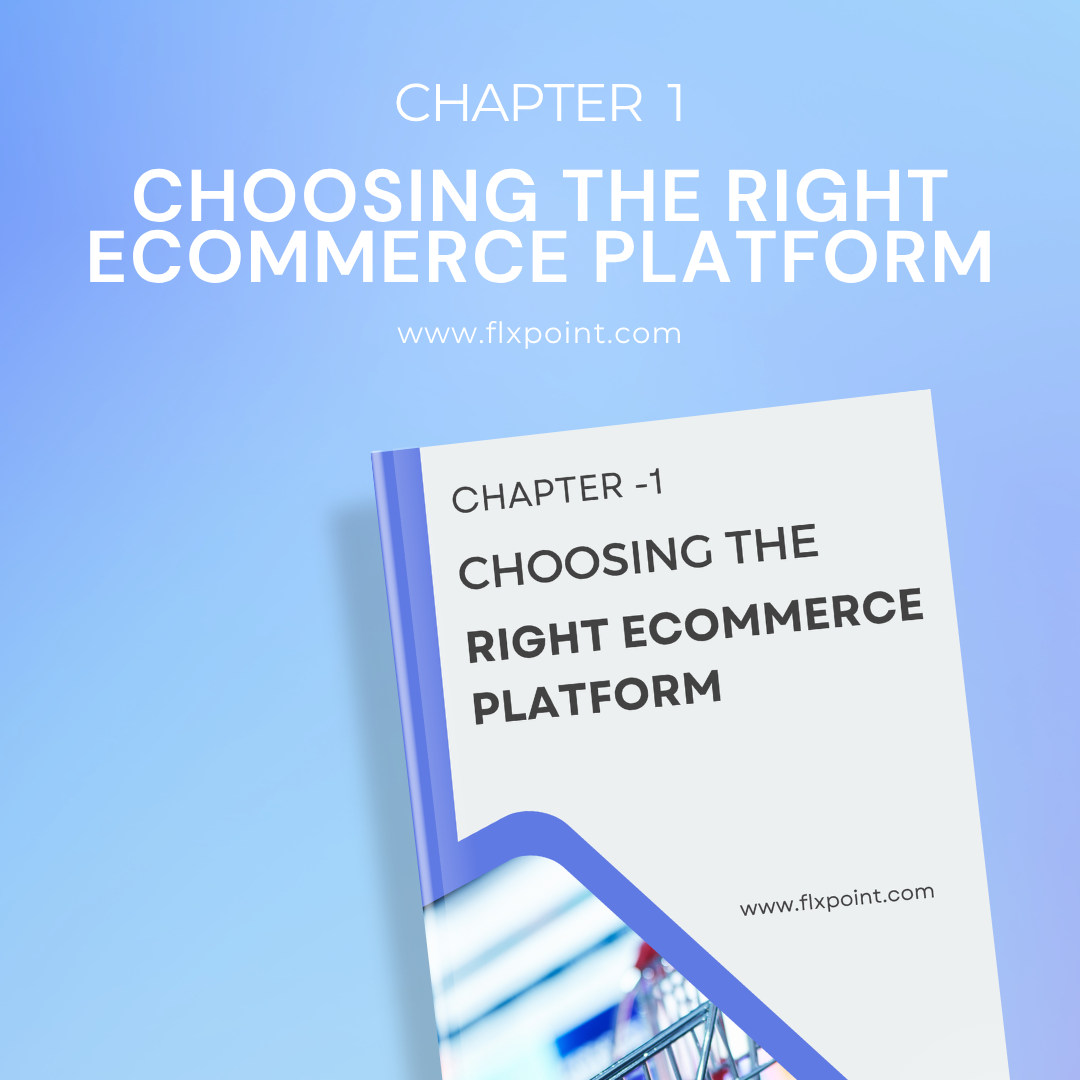
Your platform choice affects everything else you'll do. We compare Shopify, WooCommerce, BigCommerce, and Wix across what matters most: cost, scalability, marketing tools, SEO features, and payment options. Learn which platform fits your business size, technical skills, and growth plans—so you don't have to migrate later.
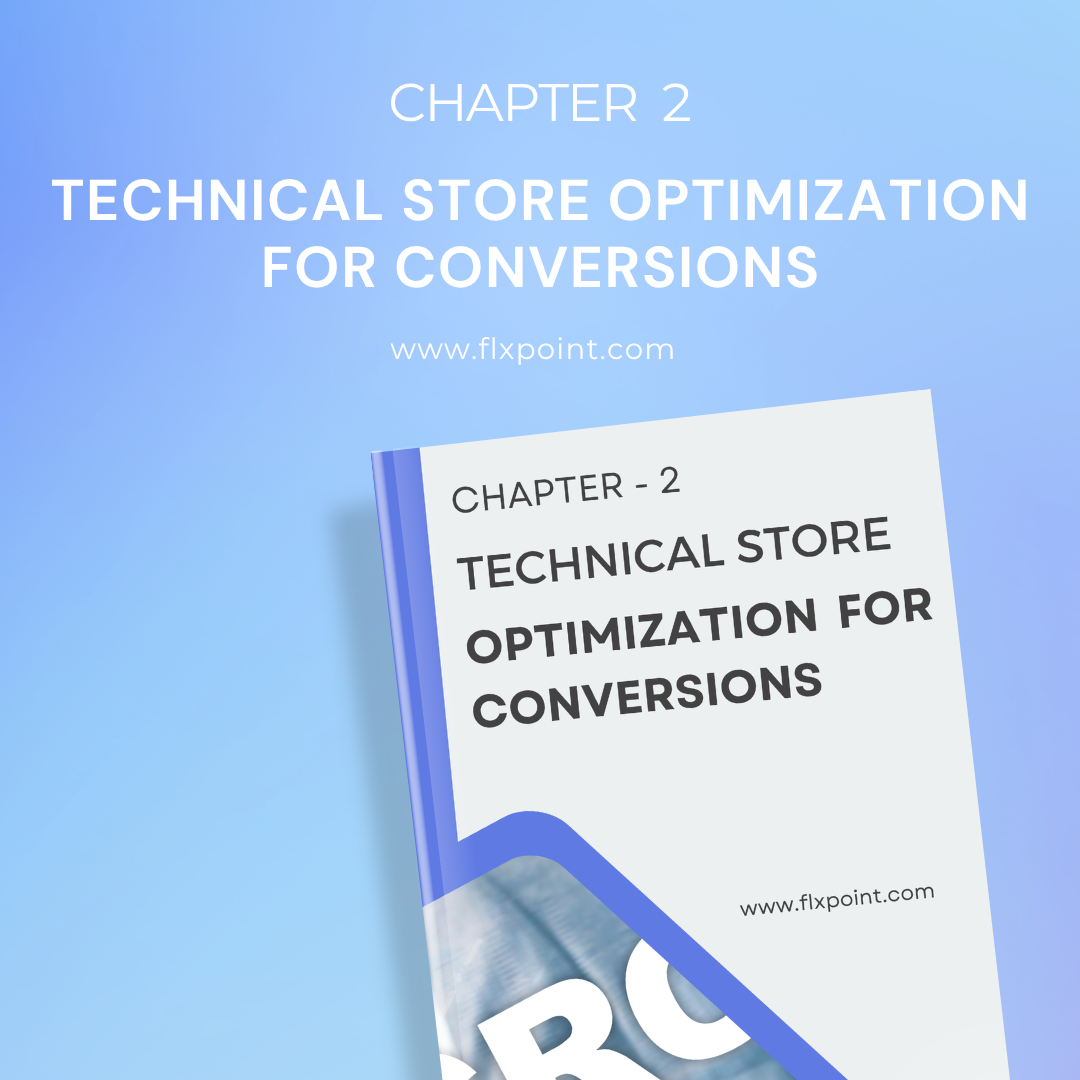
Small technical fixes create big revenue gains. Learn how to structure your store so customers actually buy, implement schema markup that helps you show up in search, speed up your site, and set up tools like Hotjar to see exactly where people get stuck in your buying process.
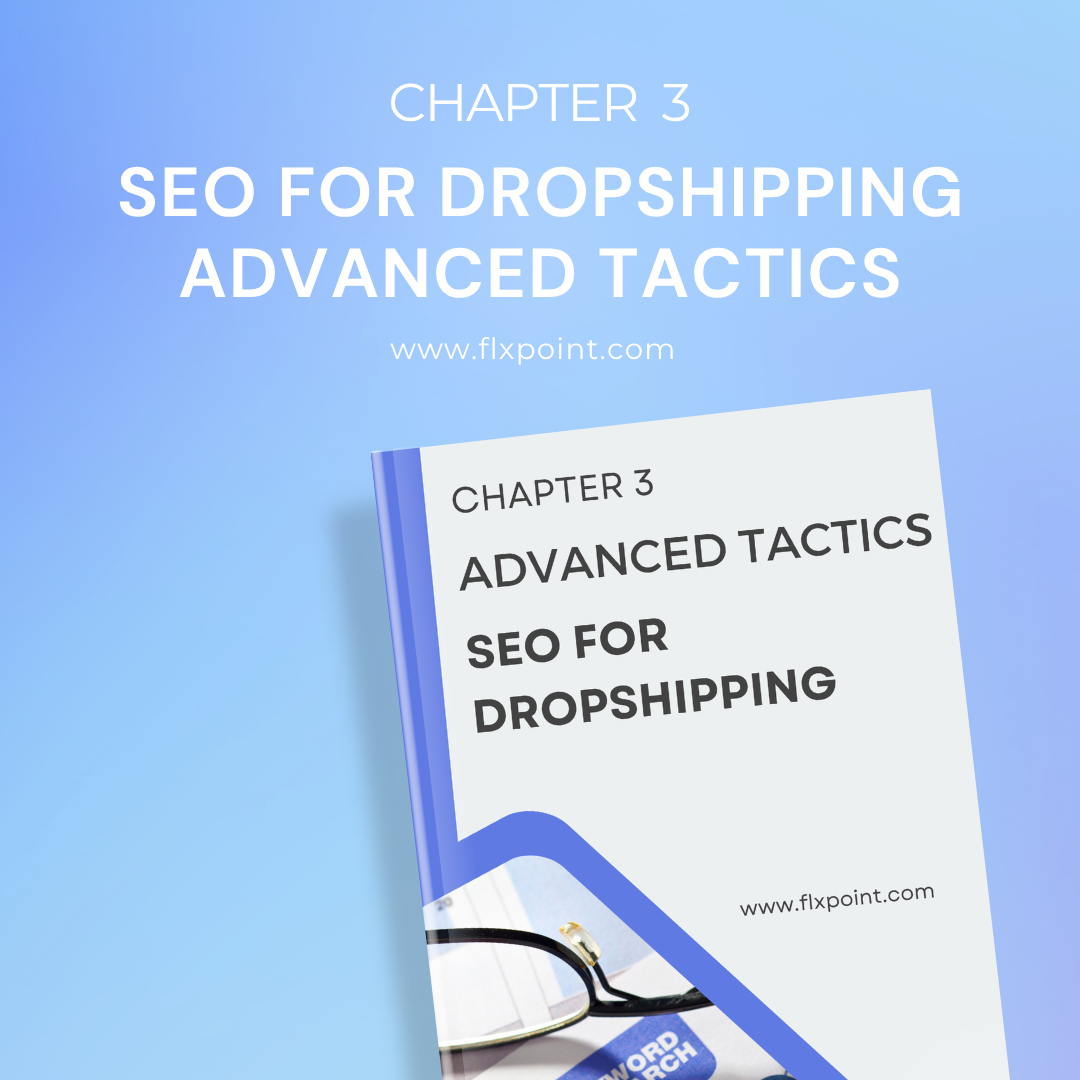

Stop wasting money on ads that don't convert. Build campaigns that work at every stage - from awareness to repeat purchase. Master Facebook ads, Google Shopping, Dynamic Product Ads, and figure out which touchpoints actually drive sales with proper attribution.
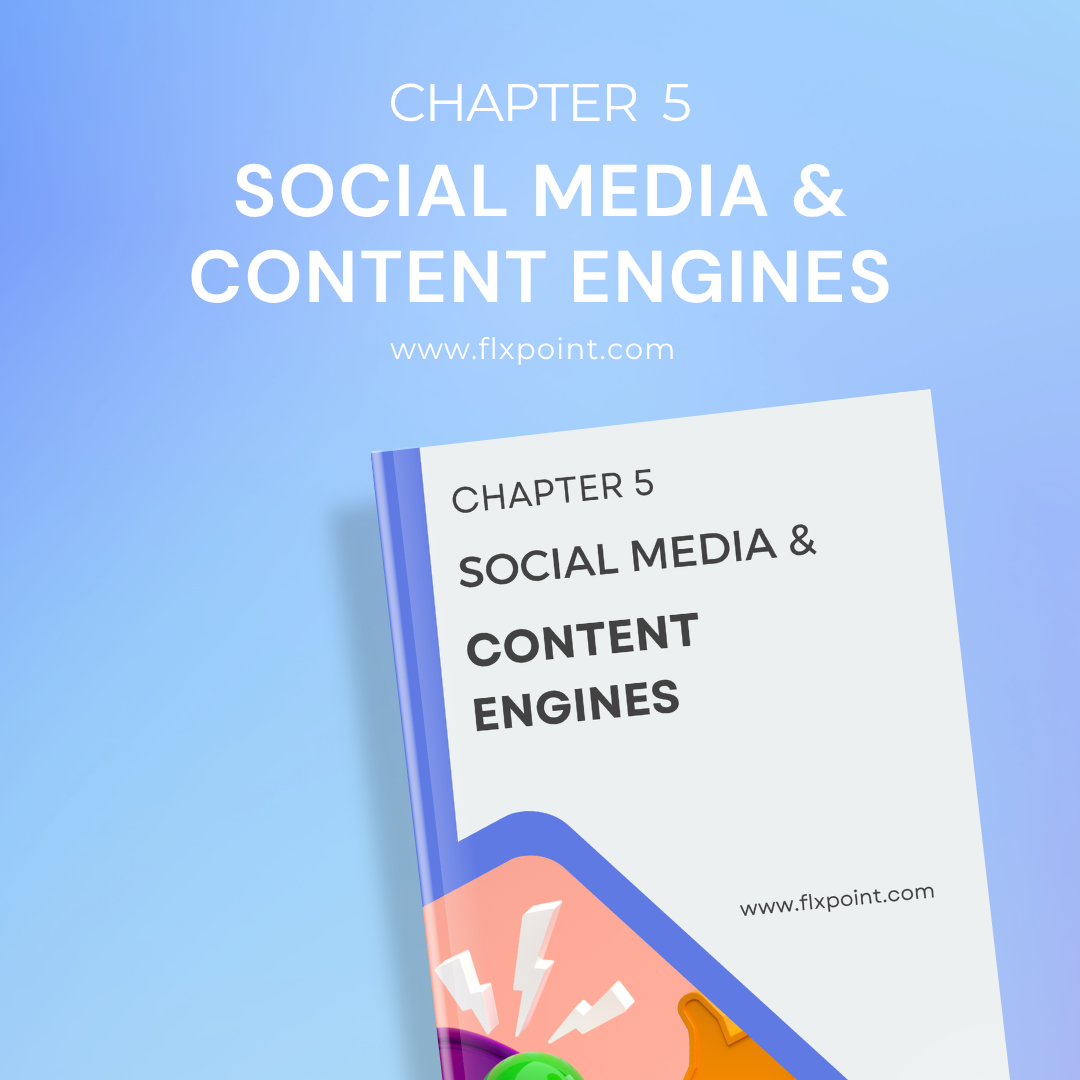
Create content systems that run themselves. Build engines for Instagram Reels, YouTube Shorts, Pinterest, and Stories. Use AI tools to scale content creation, collect user-generated content legally, create viral loops, and track what's actually driving sales.
